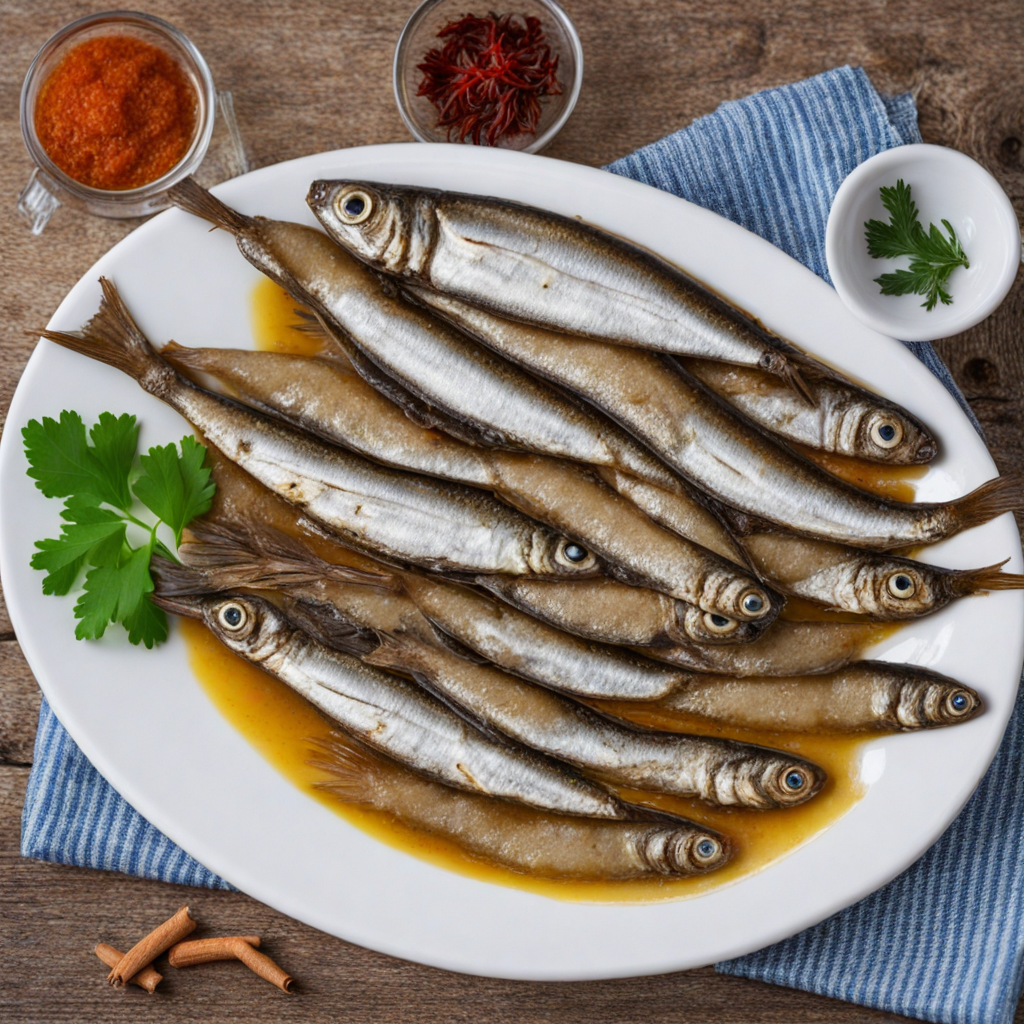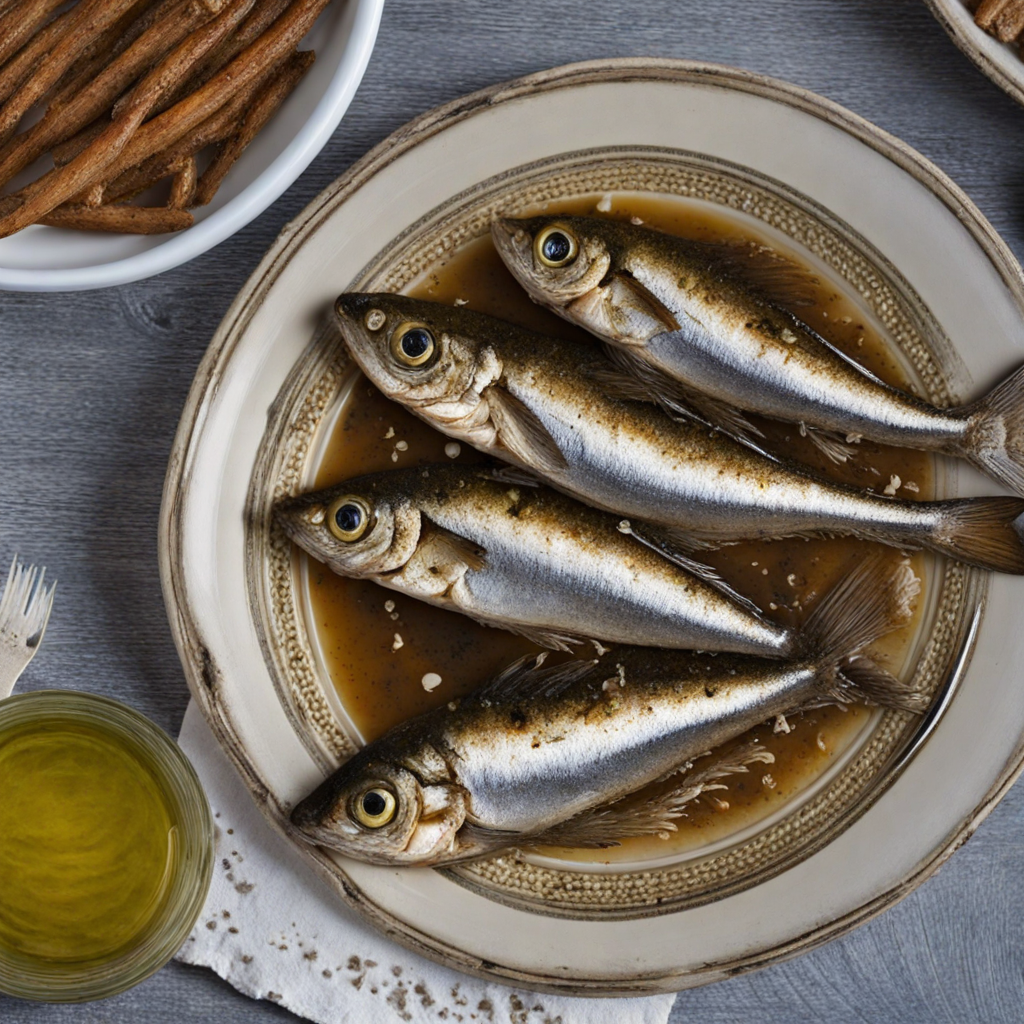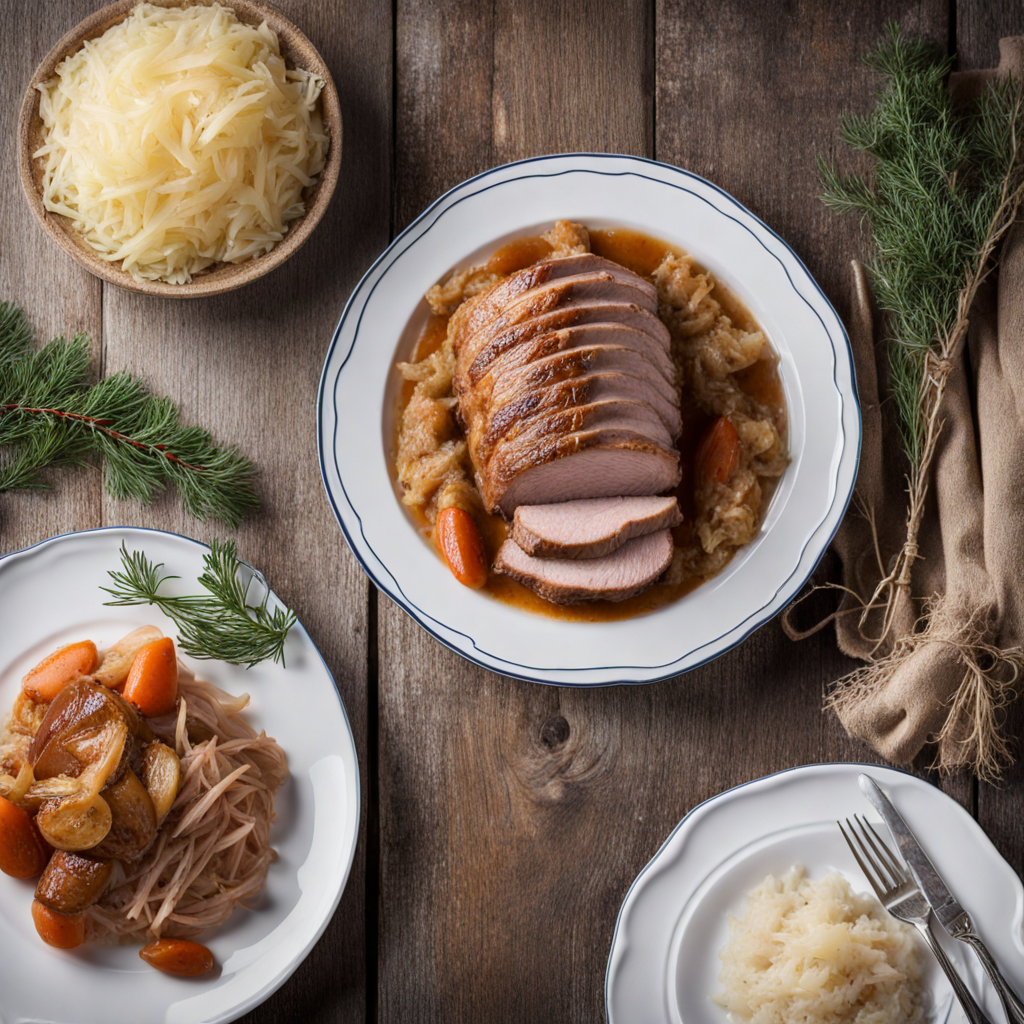Spiced Sprat
Spiced Sprat is a traditional Estonian dish that captures the essence of the Baltic Sea's rich culinary heritage. This delicacy features small, oily fish known as sprats, which are typically marinated in a blend of aromatic spices and vinegar, creating a harmonious balance of flavors. The spicing often includes ingredients like black pepper, allspice, and a hint of mustard seeds, which enhance the natural taste of the fish and provide a warm, savory kick. The marination process not only adds depth but also preserves the sprats, making them a staple in Estonian households, particularly during the colder months when fresh fish is less accessible. The texture of Spiced Sprat is delightfully tender and slightly flaky, with a rich, oily quality that melts in your mouth. When served, these sprats are often accompanied by traditional sides such as dark rye bread, pickles, or boiled potatoes, allowing for a delightful contrast of textures and flavors. The bread acts as a perfect vehicle for the sprats, soaking up the savory marinade, while the pickles add a refreshing crunch that balances the dish's richness. This combination not only elevates the sprats but also reflects Estonia's love for wholesome, hearty meals. Spiced Sprat is often enjoyed as an appetizer or part of a larger spread known as a 'smorgasbord,' where various dishes are laid out for sharing. The dish embodies the spirit of Estonian cuisine, where simplicity meets robust flavors. For those looking to explore a new taste, Spiced Sprat offers a unique opportunity to experience the bold yet subtle nuances of this beloved Estonian classic, inviting you to savor the taste of the sea in every bite.
How It Became This Dish
The History of Vürtsikilu: Estonia's Spiced Herring Delight Vürtsikilu, a beloved Estonian delicacy, is a manifestation of the country's rich culinary heritage, steeped in maritime tradition and agricultural practices. This spiced herring dish, characterized by its vibrant flavors and distinctive preparation methods, serves as a testament to Estonia's historical relationship with the Baltic Sea and its resilient cultural identity. #### Origins of Vürtsikilu The roots of Vürtsikilu can be traced back to the coastal regions of Estonia, where fishing has been a fundamental part of the local economy for centuries. Herring, a plentiful fish in the Baltic Sea, became the centerpiece of many Estonian meals, especially during the long winters when fresh produce was scarce. The word "vürtsikilu" itself translates to "spiced herring," reflecting the two essential components of the dish: herring and a variety of spices. The preparation of Vürtsikilu is influenced by the preservation methods that were necessary in a pre-refrigeration era. Pickling and curing fish were common practices, as they allowed communities to store food for the harsh winter months. The use of spices not only enhanced the flavor of the fish but also played a crucial role in preservation. Spices such as allspice, black pepper, and bay leaves were traditionally used, often combined with vinegar, sugar, and onions to create a harmonious blend of sweet and sour flavors. #### Cultural Significance Vürtsikilu is more than just a dish; it is a cultural artifact that symbolizes Estonian resilience and adaptability. Historically, herring fishing was not only a means of sustenance but also a social activity that brought communities together. Fishermen would gather to catch, clean, and prepare the fish, often sharing stories and traditions that were passed down through generations. The dish is particularly significant during festive occasions, such as Christmas and Midsummer, when families gather to celebrate and share traditional foods. Vürtsikilu is often served as part of a smorgasbord, alongside other staples such as rye bread, potatoes, and various pickled vegetables. This communal aspect of dining fosters a sense of belonging and continuity, as recipes are shared and adapted over time. Moreover, Vürtsikilu has been embraced by the Estonian diaspora, serving as a reminder of home for those who have moved abroad. It has become a symbol of national pride, representing the rich culinary landscape of Estonia and its connection to the sea. #### Development Over Time As Estonia navigated through various historical phases, including periods of foreign rule and independence, Vürtsikilu evolved but retained its core elements. The influence of neighboring countries, particularly Finland, Sweden, and Russia, is evident in the variations of the dish. While the basic recipe remains consistent, regional adaptations have emerged, showcasing local ingredients and preferences. In the 19th century, as Estonia began to assert its national identity, traditional foods like Vürtsikilu became symbols of cultural heritage. The rise of nationalism in the early 20th century spurred a revival of interest in traditional Estonian cuisine, with Vürtsikilu being celebrated at cultural festivals and events. This period marked a renewed appreciation for local ingredients and traditional cooking methods, as Estonians sought to reconnect with their culinary roots. The Soviet occupation of Estonia from the late 1940s to the early 1990s brought significant changes to food production and consumption. During this time, access to certain ingredients became limited, and many traditional recipes were modified to accommodate the availability of goods. Despite these challenges, Vürtsikilu remained a staple in Estonian households, often prepared with whatever ingredients were accessible. With Estonia's regained independence in the early 1990s, there was a resurgence of interest in traditional foods. Chefs and home cooks alike began to explore and reinterpret classic dishes, including Vürtsikilu. The rise of the farm-to-table movement and a renewed focus on sustainability have further influenced the preparation of this dish. Many modern Estonian chefs have embraced the idea of using locally sourced, organic ingredients, leading to a revival of traditional recipes with a contemporary twist. #### Contemporary Vürtsikilu Today, Vürtsikilu is celebrated not only in homes but also in restaurants across Estonia. It is often served as an appetizer, showcasing the skill and creativity of chefs who take pride in their heritage. While traditional recipes remain popular, innovative variations have emerged that incorporate new flavors and techniques. For instance, some chefs may experiment with different types of fish or introduce unique spice blends, reflecting the evolving tastes of modern diners. The dish has also found its way into international culinary scenes, as Estonian cuisine gains recognition on the global stage. Food festivals, culinary competitions, and international food fairs provide platforms for showcasing Vürtsikilu, allowing it to reach a broader audience. This exposure has not only promoted Estonian culture but has also encouraged culinary tourism, as visitors seek to experience the authentic flavors of Estonia. In addition to its gastronomic appeal, Vürtsikilu has become a symbol of Estonia's sustainable fishing practices. As awareness of environmental issues grows, many producers are focusing on responsible sourcing and ethical fishing methods. This commitment to sustainability resonates with consumers who value quality and environmental stewardship, further enhancing the dish’s significance in contemporary Estonian society. #### Conclusion Vürtsikilu is more than just a dish; it is a narrative woven into the fabric of Estonian culture, reflecting the country's history, resilience, and connection to the sea. From its origins as a humble means of preserving fish to its status as a cherished delicacy, Vürtsikilu continues to evolve while remaining rooted in tradition. As Estonia embraces its culinary heritage and shares it with the world, Vürtsikilu stands as a delicious reminder of the nation’s enduring spirit and rich gastronomic legacy.
You may like
Discover local flavors from Estonia







